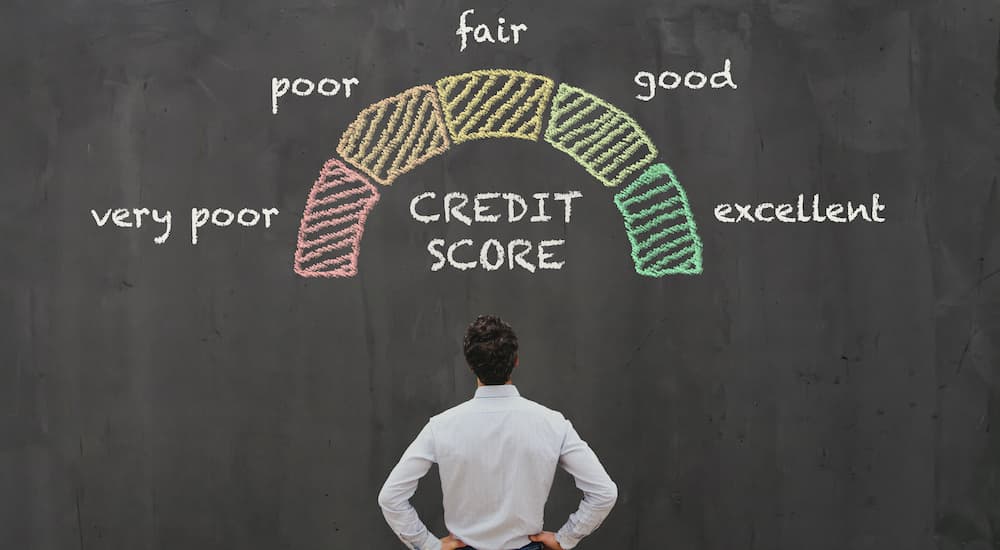Do you know your credit score? That three-digit number carries serious weight throughout your adult life. It can determine whether purchasing big-ticket items like a car or home is simple or stressful. For many people, the latter is true, as their credit scores leave room for improvement due to periods of financial instability or limited credit history. Thanks to options like bad credit car loans, individuals with low credit scores can buy a vehicle.
So, how do you know if you qualify for a bad credit car loan? What exactly is it, and is it too good to be true? Here’s the inside scoop on credit scores, automotive financing, and why a bad credit car loan can work in your favour.
Your Credit Score Explained
What is a credit score, besides a three-digit number that can add tremendous stress to any major purchase? Your credit score is a number between 300 and 900 that tells a lender (the bank or institution from which you’re borrowing money) the risk of issuing you a loan. The higher your credit score, the lower the risk for the lender—as you’re likely to repay the debt.
On the other hand, the lower your score, the higher the perceived risk of defaulting on a loan, or failure to pay, will be. Defaulting leaves a lender no other option but to send you to collections, repossess the vehicle, or foreclose on your home.
Credit scores are calculated by major credit bureaus like Equifax and TransUnion. These companies work together to collect data about your financial activity. This data is then classified into five categories: payment history, credit utilization, credit history, credit mix, and credit inquiries. Each of these carries a certain weight or influence on your overall score. Here’s what this means:
- Payment History makes up 35% of your credit score and looks at the timeliness of your payments—or if any accounts went to collections.
- Credit Utilization accounts for 30% of your score and looks at how much credit you use. Ideally, you should only use 35% of your available credit, which means not maxing out your credit cards.
- Credit History is 15% of your score and looks at the length of time you’ve had lines of credit open. In this case, the longer, the better—because it shows a pattern of how you handle debt.
- Credit Mix makes up 10% of your score and looks for a healthy balance between revolving credit (credit cards) and installment credit (auto loans, student loans, mortgages).
- Credit Inquiries make up 10% of your credit score. This category looks for frequent hard inquiries into your score, which implies that you’re financially struggling and need money.

Credit Scores: From Poor to Excellent
Canadian credit scores range between 300 and 900, with 650 as the average score. There isn’t a set standard of a good or excellent credit score. Instead, each lender sets its requirements as to what score is acceptable. However, there are some general guidelines to what these scores mean. For example, Equifax ranks scores as follows:
- 300 to 559: Poor
- 560 to 659: Fair
- 660 to 724: Good
- 725 to 759: Very Good
- 760 to 900: Excellent
Bad Credit Car Loans: The Basics
When you need a reliable vehicle to get to and from work, there’s nothing more stressful than knowing that your credit score will make the purchase nearly, if not entirely, impossible. Rebuilding your credit after a period of financial instability is a daunting task and a seemingly never-ending cycle. You need to rebuild your credit with a new line of credit, but your low credit score makes it impossible to get approved for a credit card or loan. Without a vehicle, commuting to work becomes even more difficult and puts you at risk of losing your job; a steady source of income is essential for paying your bills on time.
Traditional lenders set high requirements or standards, which is fine when your credit score is very good or excellent. However, this makes big-ticket purchases virtually impossible for individuals rebuilding their credit or who don’t have a long credit history. That’s where bad credit car loans come in. These loans break the cycle to help individuals with low credit scores or minimal credit history. How? They defy the standards set by conventional lenders.
Bad credit car loans, generally known as subprime auto loans, don’t have the same stringent standards as conventional automotive loans. Instead, subprime lenders make it possible for individuals with low credit scores to purchase a vehicle. So, what’s the catch?
Bad Credit Car Loans: Too Good to Be True?
Bad credit car loans aren’t too good to be true. Though they may sound like “bad loans,” they’re a feasible solution for car shoppers with bad credit. Individuals who qualify for these subprime auto loans generally have a high debt-to-income ratio and a credit score below 600. They may also have a history of bankruptcy, foreclosure, frequent late payments, or lines of credit sent to collections—or little credit history at all.
Subprime lenders take these characteristics into account for every potential borrower. In exchange for less stringent standards, a bad credit car loan typically comes with a higher interest rate and fees. The higher interest rate reflects the higher risk the lender takes when providing the loan. There’s a strong possibility that the loan won’t be repaid, potentially causing the lender a significant financial loss. Additionally, a lender may charge penalty fees for repaying the loan before the end of the term or contract.
As you’re shopping for a bad credit car loan, one of the most critical questions to ask is whether the lender reports your payments to the major credit bureaus. Why is this important? Subprime lenders aren’t required to report your payment activity. If you’re working with a lender that doesn’t report your payments, your loan activity isn’t helping to rebuild your credit, and that means every payment you make—on time and in full—isn’t benefiting you in every possible way. In contrast, if your lender reports your payments, this activity can positively impact your credit score.
Your Future Behind the Wheel
One of the biggest takeaways is to understand that not all bad credit car loans are equal or beneficial. For example, if your goal is to rebuild your credit, working with a subprime lender that doesn’t report to the major credit bureaus is a waste of time. Unfortunately, the market is also laden with predatory lenders notorious for withholding essential information and charging exorbitant fees. While regulations have mitigated many of these practices, it’s always important to err on the safe side: work with a reputable lender, ask a lot of questions, and read the fine print more than once.
At the end of the day, a loan of any type—be it a bad credit car loan, a credit card, or a mortgage—is a contract between you (the borrower) and the lender. As with any contract, it’s vital to understand the terms and read the fine print before signing on the dotted line. For example, with a bad credit car loan, make sure the contract outlines everything in detail: the length of the loan, required monthly payments, interest rate, and associated fees. Then, there will be no question of what’s expected from you, which sets you up for greater financial success as you rebuild your credit—one payment at a time.





